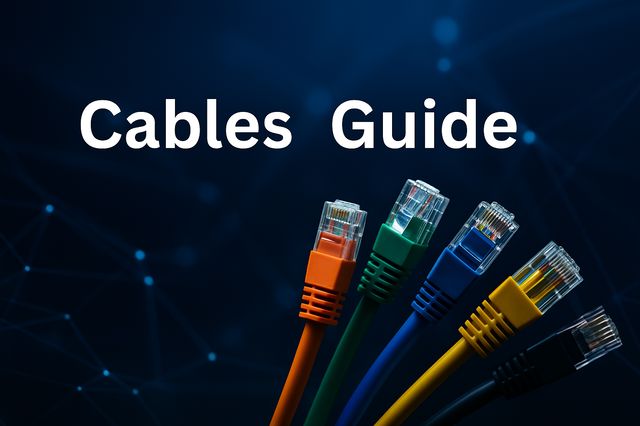The Rise of Shadow IT and Its Security Implications
In the era of cloud computing, remote work, and decentralized IT environments, Shadow IT has become an unavoidable challenge for enterprises. Employees and departments often deploy unauthorized applications, cloud services, and devices without IT approval, leading to increased security risks, compliance violations, and data exposure.
A report by Gartner estimates that 30% to 40% of all IT spending in large enterprises occurs outside of IT’s direct control. This means that critical business applications, sensitive data, and third-party integrations are often unmonitored, creating significant blind spots in security posture.
While Shadow IT can drive innovation and agility, it also introduces serious risks—which is why organizations must implement effective monitoring, control mechanisms, and governance frameworks to balance productivity and security.
Understanding the Risks of Shadow IT
Data Security & Compliance Violations
- Unapproved cloud applications can store sensitive company data outside corporate security policies.
- Non-compliant storage locations violate GDPR, HIPAA, and SOC 2 regulations, leading to legal and financial repercussions.
Increased Attack Surface
- Unvetted applications can contain vulnerabilities, making them prime targets for cyberattacks.
- Employees may unintentionally expose the organization to ransomware, phishing, and supply chain attacks.
Lack of Visibility & Control
- IT teams lose oversight of data flows, user activities, and software dependencies.
- Security teams cannot patch, monitor, or respond to threats within unauthorized systems.
Integration & Performance Issues
- Shadow IT creates compatibility conflicts with existing enterprise applications.
- Unmanaged API connections can lead to data inconsistencies, downtime, and security breaches.
Despite these risks, blocking Shadow IT entirely is unrealistic. Instead, organizations must focus on monitoring, securing, and integrating these technologies into a structured governance framework.
How to Monitor and Control Shadow IT in Your Organization
Discover & Map Unapproved Applications and Devices
The first step in controlling Shadow IT is gaining full visibility into unauthorized systems operating within the enterprise.
- Deploy Cloud Access Security Brokers (CASBs) to detect and analyze unsanctioned SaaS applications.
- Utilize network traffic analysis (NTA) tools to monitor data flows and unusual connections.
- Implement Endpoint Detection & Response (EDR) solutions to identify unauthorized software installations on corporate devices.
By continuously mapping the presence of Shadow IT, security teams can understand their attack surface and assess risks effectively.
Implement Shadow IT Governance & Security Policies
Once IT leaders identify unauthorized systems, they must enforce clear security policies that establish acceptable use guidelines for new applications.
- Create a formal application approval process that allows employees to request new software securely.
- Develop role-based access controls (RBAC) to restrict sensitive data access within third-party apps.
- Mandate Multi-Factor Authentication (MFA) for all Shadow IT services that integrate with corporate accounts.
- Establish an “approved vendor list” to streamline secure procurement processes for SaaS and cloud services.
A well-defined governance strategy reduces security gaps while still allowing employees the flexibility to innovate.
Monitor & Control SaaS and Cloud-Based Shadow IT
Cloud-based applications account for the majority of Shadow IT deployments. Organizations must use automated security solutions to track and secure cloud-based services.
- Cloud Security Posture Management (CSPM) – Identifies misconfigurations and enforces security best practices in SaaS environments
- Cloud Access Security Brokers (CASBs) – Provides real-time visibility, data loss prevention (DLP), and risk assessments for unauthorized cloud services.
- Identity and Access Management (IAM) – Ensures that only authorized users can access sanctioned and unsanctioned cloud applications.
- Zero Trust Network Access (ZTNA) – Verifies user identity before granting access to any external SaaS system.
By monitoring cloud usage and enforcing security controls, businesses can securely integrate necessary Shadow IT tools without compromising cybersecurity.
Establish an Employee Education & Awareness Program
Most Shadow IT deployments stem from a lack of awareness about security risks. Educating employees about the dangers of unauthorized IT usage is crucial.
- Conduct regular security awareness training on Shadow IT risks and best practices.
- Teach employees how to recognize phishing attempts and SaaS-related security threats.
Encourage open communication with IT teams, so employees feel comfortable requesting new tools rather than bypassing security protocols.
By empowering employees with knowledge, organizations can reduce the reliance on Shadow IT while fostering a culture of security awareness.
Enforce Shadow IT Through Automation & Policy-Based Controls
Rather than relying on manual monitoring, organizations should implement automated policy enforcement to block high-risk Shadow IT activities.
- Configure firewall and DNS filtering policies to restrict access to unapproved SaaS applications.
- Deploy Secure Web Gateways (SWGs) to block unauthorized cloud storage and file-sharing services.
- Use AI-driven behavioral analytics to flag suspicious data transfers, unauthorized logins, and unusual network activity.
- Implement automated policy enforcement that alerts IT teams when an employee attempts to use unsanctioned tools.
By automating Shadow IT detection and response, organizations can eliminate security blind spots while maintaining workflow efficiency.
A Balanced Approach to Shadow IT Management
Shadow IT is not inherently bad—it often fosters innovation, accelerates workflows, and enhances productivity. However, when left unmonitored and unsecured, it becomes a serious cybersecurity risk.
To effectively manage Shadow IT, organizations must:
- Gain visibility over unauthorized technologies through real-time monitoring tools
- Enforce security policies that enable safe SaaS adoption without compromising compliance.
- Educate employees about security risks and provide secure alternatives for software requests.
- Leverage automation to control high-risk applications and enforce security baselines.
By balancing security and usability, IT leaders can turn Shadow IT from a risk into an opportunity—ensuring business agility without sacrificing cybersecurity.


